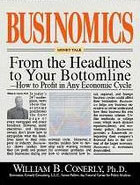You can all pass the written exam, I bet.
Question: which is more important, tactics or strategy?
Answer: Both are vital. Tactics—the blocking and tackling, operational efficiency, customer service—are necessary. However, excellent tactical execution is not enough for success. A company also needs a strategy that focuses on selling in growing, profitable markets while building systems that will result in tactical efficiency in the future.
Now let’s get to the practical exam: How many hours have you spent bird-dogging tactical issues? Have you answered a call from a customer asking about the status of the order? Have you rolled up your sleeves and looked at a production snag? Have you reviewed small expenses in the monthly financial report? Contrast this time spent on tactics with time you’ve spent learning how your clients’ issues will change in the coming years. Add to that time spent learning how tomorrow’s technology will impact your operations. Go on with all the other strategic issues. How do these two time tallies compare?
In the economic recession, many companies got caught up in tactics. How many people do we need to lay off to stay in business? How can we continue to deliver product with a smaller work force? How can we fund our operations with reduced cash flow and less access to credit?
That’s not wrong. Keeping the company in business is never wrong. However, as the economy gradually improves, it’s time to devote more executive resources to strategy. Most businesses that have survived up to this point (I’m writing in January 2011) are likely to continue through the year. Unless they are teetering on the brink of bankruptcy, they should extend their gaze from next month to the far horizon.
Step one is to evaluate your current strategic plan. That does not mean to evaluate that thick binder which has been gathering dust on your bookshelf. Sketch out what strategy is actually being implemented. Not what you planned to implement, not what your vice president says he’s about to get around to implementing, but what your business is actually doing. To help with that issue, take a look at McKinsey Quarterly’s recent series of articles, especially “Have you tested your strategy lately?”
Step two is to scan the business and economic environment for changes. Some of this involves old-fashioned economics: what will be the condition of our customers in the coming years? How much will our inputs cost? However, the futurist exercise should be broader, including changes in demography, globalization, financial flows and technology.
Step Three is to start work on the new business strategy, building on the good parts of what you have been doing. As the McKinsey articles stress, companies are too fast to claim expertise. For example, a few decades ago electric utilities wanted to diversify. Some of them said, “We know energy. We’ll buy other energy companies.” One company I used to work for bought a wildcat oil exploration company. Believe me, they knew nothing about that part of the energy industry and lost millions upon millions of dollars. However, they ignored some areas that they had great expertise in: stringing wires and billing customers, which could have added great value as alternative phone carriers and cable television were just starting to take off.
Step Four is to review the new strategy draft against the criteria that you used in Step One. The McKinsey questions are a good starting point, but feel free to modify them, dropping some questions and adding others. This is where the process becomes tedious and the senior management team is anxious to get the meeting done. However, I’ve seen plenty of leadership groups delete one element of strategy for good reason, then add another element which is just as bad.
I strongly recommend having an outsider involved, not just to make presentations, but to ask the tough questions. Members of a management team who have to work with one another every day may be hesitant to ask, “How do you know your customer service is better than the competitors’ service?” An outsider with a strong ego will ask those questions and not allow people to accept doubtful hypotheses. (As you may have guessed, I’m available to help companies throughout the strategic planning process.)
A goal that should be part of any long-term strategy is that the company should be able to implement any element of strategy that senior management decides. So if a new strategy requires prices to be cut (or raised), the rank and file sales staff can handle the price change with a minimum disruption. Or if the new strategy entails adding people in one area while cutting staff in another, the line managers can quickly find good hires on the one hand, and dismiss the least productive people on the other side of the business.
There may come a time when your business needs to get more tactical. Usually you need a balance, but the recession triggered a shift toward tactics. The next recession, whenever it comes, will renew that shift. In the meantime, come back to an equilibrium with strong attention to both tactics and strategy.



Great article Bill. As small business owners we actually do step one (evaluate the current strategic plan) at the beginning of every year. These extra tactics will only help us. :-)